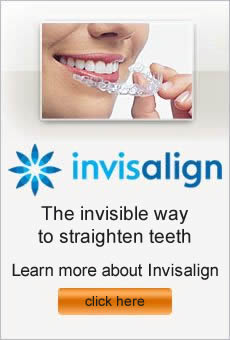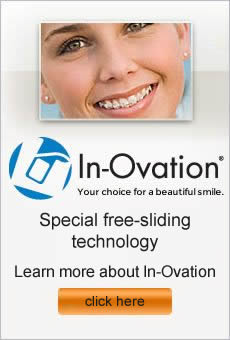When most people think of October, they envision cooler weather, changing leaves, and Halloween. The American Association of Orthodontists (AAO) celebrates October as National Orthodontic Health Awareness. During this month, many orthodontists will help educate the public about the types of braces, adult orthodontic treatment, and other important orthodontic issues.
Having a straight smile can boost confidence and improve oral health. Crooked and crowded teeth are harder to clean, which makes you more susceptible to issues like gum disease and tooth decay. If you have concerns about the alignment of your teeth, contact your orthodontist.
Another big event during October called Halloween, can present challenges for those with braces. To enjoy the holiday and protect your orthodontia, consider these helpful hints:
• Choose wisely. Avoid sticky candies like gummy bears, taffy, or caramel because these treats can pull off brackets and damage wires. Stick with milk chocolate, sucking candies or sugarless gum instead.
• Don’t overdo. Too much candy will not only give you a stomachache, but it can also create problems for your teeth. The sugar in the candy feeds the bacteria in your mouth and increases the chances of developing decay.
• Remember to brush. As soon as you finish your treats, brush and floss your teeth to remove food particles from your teeth and in between brackets.
• Try healthy alternatives. Have a piece or two of candy but consider celebrating the holiday with apple slices, grapes, or other nutritionally sound options.
orthodontic dental practice in Sherman Oaks
Trying to figure out if your child needs braces and when to get them can feel overwhelming. Before making any decisions, you need to find an orthodontist you trust and have a complete evaluation. Read through the following question and answers to learn more about early orthodontic treatment.
When should I take my child to the orthodontist?
The American Association of Orthodontists suggests you schedule an initial consultation about the time your child turns seven. By this age, enough permanent teeth have come in and enough jaw growth has occurred that the orthodontist can identify any problems.
Are there any early signs of problems?
Although you should always consult an orthodontist for any diagnosis, you can look at your child’s bite. If the top teeth line up exactly with the bottom teeth and no gaps or spaces are visible, your child may not need orthodontic therapy. Other issues such as an underbite or overbite may be immediately noticeable.
Won’t my child outgrow the issue?
If you child has a bad bite, it won’t correct itself. In fact, the malocclusion may worsen if you don’t seek proper treatment. As your child gets older, therapy may be more painful, so an early evaluation is critical.
What is the purpose of early orthodontic treatment?
With early treatment, your orthodontist can eliminate the need for more drastic measures at a later time. In some cases, results won’t be as successful once your child’s jaw and face have finished growing.
Will my child need to have teeth removed?
Usually, extraction is not part of orthodontic treatment. Your orthodontist will only pull teeth if he or she can’t make enough room for all your child’s teeth.
Early Orthodontic Treatment in Sherman Oaks, CA – Mehdi Fotovat, DDS
Defined as the practice of preventing or correcting irregularities relating to the teeth or mouth, orthodontics allows people to enjoy straighter, healthier smiles. Though you may know the basics about braces, some of these interesting tidbits might surprise you.
• Activated by body heat, the wires used in today’s braces were created by NASA for use in the space program.
• An estimated 4 million people in this country are enhancing their smiles with orthodontic treatment. Approximately 20 percent of those patients are over age 18.
• Braces are attached to your teeth with cement, which is now made with a special fluoride-releasing component, to help protect teeth from decay.
• Charles Tweed has the honor of being recognized as the first orthodontist in this country.
• Dating back from the eight to fourth century B.C., the idea of orthodontic treatment was practiced by the Etruscans, who utilized wires to close the space left by lost teeth.
• Famous people like Whoopi Goldberg, Chelsea Clinton, Tom Cruise, Miley Cyrus, and Gwen Stefani have worn braces.
• In the United States and Canada, only 8,000 of the 160,000 dentists are practicing orthodontists.
• Metal braces used to be the only choice for straighter teeth, but modern advancements have resulted in options like ceramic brackets, lingual braces, and clear aligners for adult patients.
• Not wearing their retainers after treatment causes up to 25 percent of patients to need braces again.
• Orthodontics became a dental specialty in the 1900s.
• To become an orthodontist, you must complete an additional two to three years of training after dental school.
• Wearing braces does not increase your chances of getting struck by lightening. With or without a metal mouth, the odds are about one in 700,000 each year.
It’s time to schedule a visit to our Sherman Oaks, CA orthodontic office – Mehdi Fotovat, DDS.
With the start of school, many children and young adults will be participating in after school sports activities. During these activities, it’s important to protect your smile, especially during orthodontic treatment. This Q and A will provide valuable information about common concerns patients may have.
How do I protect my child’s teeth during physical activities?
If your child will be involved with activities that could involve contact such as football, basketball, soccer, and even horseback riding, a mouth guard can help prevent injury. Although you can purchase these appliances at certain athletic stores, the most effective mouth guards are the custom devices designed to fit your child’s mouth. Ask your orthodontist about getting fit for this appliance.
Do sports drinks really hurt your teeth?
Because they have a large amount of sugar in them, sports drinks can increase the chances of cavities. If you have one of these beverages, drink through a straw and rinse your mouth right away. To stay hydrated, water is the best choice.
Should I wear my retainer when I participate in sports activities?
Your retainer is designed to keep teeth in the proper position after your braces are removed. The appliance could get broken, so take it off during games or sports activities.
Can I wear a mouth guard with braces?
While you have braces, you need to wear a non-fitted mouth guard, which will protect your teeth without knocking the brackets loose.
What happens if I have an accident that damages my orthodontic appliance?
Contact Dr. Fototvat’s office as soon as possible for further instructions.
Keeping your smile beautiful and healthy at our Sherman Oaks, CA orthodontic practice – Mehdi Fotovat, DDS
Braces can straighten teeth and transform your smile. After orthodontic treatment, however, patients need to wear their retainers to stop teeth from shifting out of place. Forgetting to wear that retainer may result in movement and the potential need for more therapy. A spring retainer can help correct the position of your teeth, saving the hassle and expense of additional time in braces.
Made of a wire and acrylic frame, the spring retainer extends from cuspid to cuspid and forces the front teeth back into place. Spring retainers work well at fixing the shift that results when patients haven’t worn their original retainers as directed by their orthodontist. Even adults who stopped wearing their retainers years ago may benefit from therapy with a spring retainer.
Though spring retainers can cause movement, these oral appliances aren’t miracle workers. Ideally, a spring retainer will move your teeth one to two mm and should only be used for minor adjustments. Spring retainers won’t work for root or jaw movement, and these devices don’t help severely crooked teeth. Usually, spring retainers focus on the four front teeth, but they can be adjusted to encompass more of your smile.
Treatment time with a spring retainer only lasts about six months. Once the teeth have moved back into place, you will need to wear the spring retainer at night for a certain period of time to preserve the desired results. To determine if you could benefit from use of a spring retainer, contact Mehdi Fotovat, DDS in Sherman Oaks, CA. After a thorough exam, the orthodontist can make a detailed recommendation for treatment.
Mehdi Fotovat, DDS. Sherman Oaks California orthodontics – creating beautiful, straight smiles!



